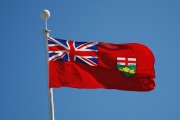Spring has sprung, and along with longer days and (hopefully) warmer weather, this year it brings another level of excitement for climate nerds: Ontario’s first cap and trade auction is happening tomorrow.
Pricing carbon is a critical part of any plan to reduce greenhouse gas emissions because it gives companies and individuals a financial incentive to limit their emissions. Globally, 40 countries — including China — have announced or implemented plans for pricing carbon. More locally, 93 per cent of Canadians already live in provinces and territories that have, or are putting in place, some form of carbon pricing. Even a small carbon price will impact long term decision making to limit emissions.
Cap and trade is the approach that Ontario has taken to provide this price signal. In short, it sets a cap on the amount of greenhouse gas emissions that large producers, generally companies or institutions, can emit. This cap gets stricter over time: Ontario’s emissions reduction target is 37 per cent below 1990 levels by 2030, and the cap will be reduced every year to help us get there. At the end of each year, a company needs to have enough allowances to cover any emissions over the cap. The trade part is a market for companies to buy and sell those allowances. If a company can easily reduce their emissions below their cap, they can then sell those allowances to another company that will exceed their cap.
Ontario’s cap and trade regulations went into effect on January 1st, so the program is already underway. Tomorrow’s auction is just the first opportunity for participants to purchase allowances. All the revenue generated by the province through the auction is legally required to be used for programs that will provide additional emission reductions, like public transit and housing retrofits.
The nature of cap and trade means that we won't be certain what price allowances will be sold at until after the auction. As with anything being done for the first time, we should expect some uncertainty and variability in prices during the first year. What is certain is that provincial emissions will go down by about 4 per cent yearly as the cap on emissions is reduced every year.
Competitiveness
With the auction this week we are likely to see a bunch of commentary around how cap and trade affects Ontario’s competitiveness. Work by the Ecofiscal Commission has shown that only 2 per cent of Ontario’s GDP is actually emissions intensive and trade exposed, and the Ontario government has been working with companies to provide allowances to ease the transition. Companies can use these allowances to meet their own requirements, or sell them to fund efforts to reduce their emissions.
Looking to cap and trade’s future
There remain some big questions down the road for the system. While the intention is to link up with Quebec and California through the Western Climate Initiative, there is some uncertainty in the linked market. Of particular concern is whether Canadian provinces will be able to claim credit for reductions in California (and vice versa) – doing so requires a bilateral agreement with the U.S. and that may be challenging in the current political climate. A key downside to not linking is that it’s likely to be more expensive to achieve our emission reduction goals, but a positive would be that all revenue would stay in Ontario.
In addition, the federal government will require all provinces to have a price on carbon by January 2018. Provinces have the choice of either cap and trade (with the cap in line with federal targets) or a carbon price starting at $10 per tonne. Over time this will create interesting questions about the equivalency between the two methods of pricing carbon.
By implementing cap and trade this year, Ontario has chosen to proactively set its own course and move forward with a plan that will result in real reductions in emissions, and provide funding for much needed complementary programs.








